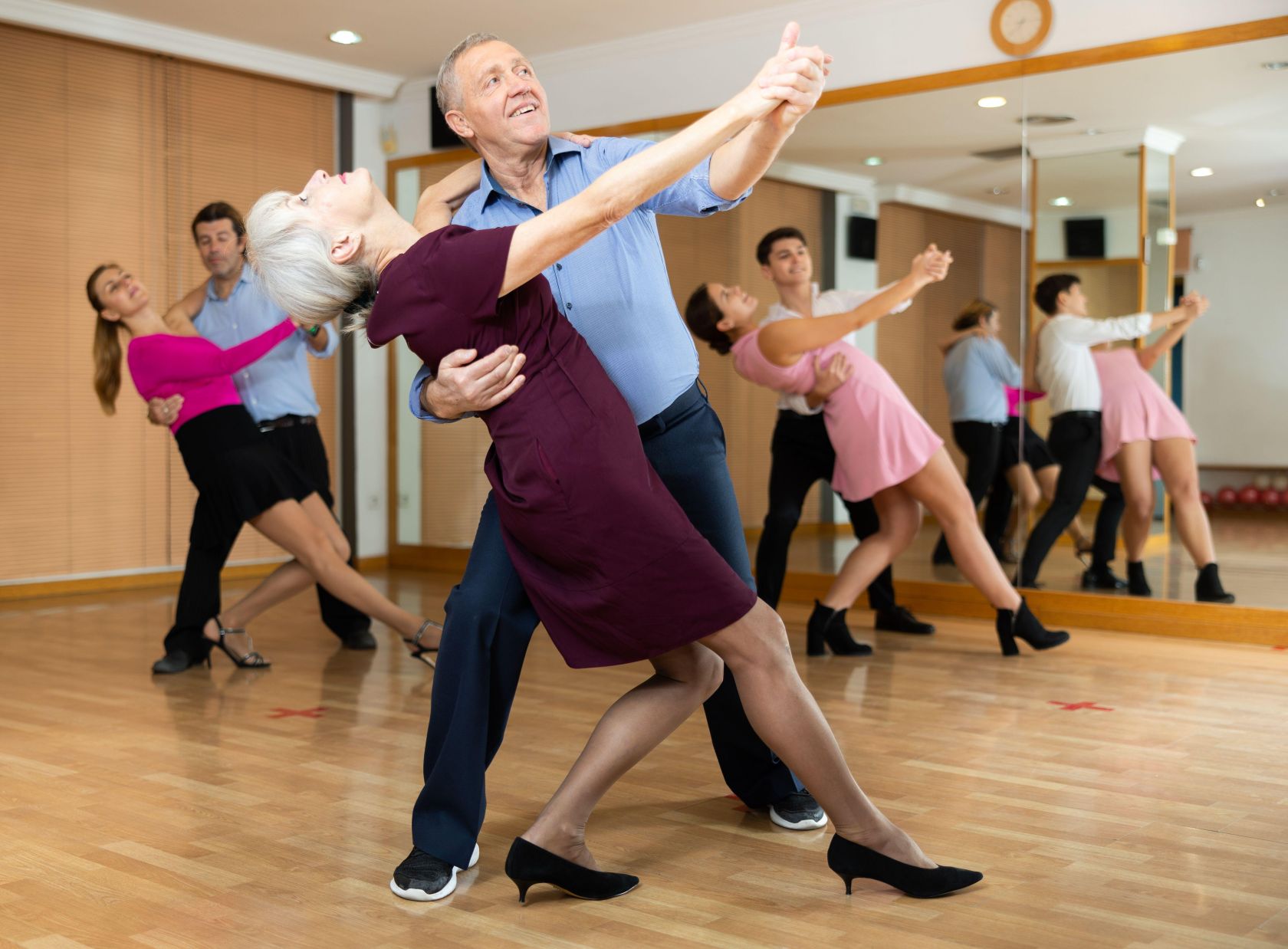Excitement is bubbling for another dazzling season of sequins, showmanship and spectacular footwork, as the new cast of Strictly Come Dancing is gradually revealed.
As you watch the celebrities twirl, glide, and waltz their way across the dance floor, you might feel inspired to dust off your own dancing shoes. But beyond the glitz and glamour, ballroom dancing offers a plethora of health and wellbeing benefits – especially as we get older.
Over the years, the hit show has welcomed a number of older contestants to its infamous ballroom, from British politician Ann Widdecombe, who competed at 63, to TV presenter Johnny Ball, who took part at 74. The record for the oldest participant so far goes to English broadcaster and former newsreader Angela Rippon, who joined the competition at the age of 79.
To find out more about the advantages of ballroom dancing later in life, we spoke to some experts about how taking to the floor can boost both health and wellbeing.
Increases strength and muscle endurance
“Different dance styles activate multiple muscle groups, leading to improved strength and muscle endurance,” says Dr Naveed Asif, GP at The London General Practice. “This not only enhances muscle tone but also promotes mobility, which is crucial for reducing the risk of falls, particularly in older adults.”
Emily Stephenson, dance and fitness instructor and founder of The Dancer Body, agrees and adds: “There’s lots of repeated movements in dance which will help improve muscle endurance, so the muscles can work for longer without becoming tired.
“Even if you are starting dance later in life, it can help improve and make everyday activities like standing and sitting, climbing stairs, carrying groceries easier.”
Improves balance and coordination
“Dance trains balance and coordination. Turns, changes of direction, and rhythmic weight shifts challenge the systems that keep us steady,” says Neil Harrison, chief executive officer at British DanceSport Association. “Recent reviews suggest dance can improve balance measures and may help reduce the risk of falls compared with usual activity, while also being enjoyable enough to sustain over time.”

Boosts cardiovascular health
“Dancing elevates the heart rate, improving circulation and reducing the risk of heart attacks and strokes over time,” says Asif. “The rhythmic movements involved in various dance styles serve as an enjoyable way to engage in cardiovascular exercise.”
Enhances memory and cognitive function
Dancing can significantly improve memory and cognitive function.
“Although you’ve got a teacher there to lead you, you’ve got to learn and remember choreography which stimulates the brain’s memory centres,” says Stephenson. “If you’re attending a class where you’re learning a routine over a number of weeks, you’ve got to remember it week to week. You’ve got to recall sequences, patterns, spatial awareness and the timing.”
Some research also suggests that dance can benefit people living with dementia
“Music and movement together can cue vivid autobiographical memories, from a first Waltz to a favourite Latin track,” says Harrison. “Dementia charities and research bodies endorse music-based activity for wellbeing. Familiar music can quickly trigger positive memories even when other recall is patchy.”
Reduces loneliness and isolation
“Classes, socials and tea dances bring peers together to chat, laugh and belong,” says Harrison. “In a country where many older adults report loneliness, regular social connection is protective for health and mood. Social prescribing now routinely links people to community activities like dance, because it works for companionship as well as fitness.”
Improves mood
“I think dancing is so uplifting and makes you feel good,” says Stephenson. “It releases those feel-good chemicals and endorphins and gets everybody moving together.”
How to start:
“Research dance classes that are put on by your local council, community centres, charities and dance studios and see what they’re offering,” recommends Stephenson. “If you are feeling nervous or are not an experienced dancer, look for a beginner class. Look for somewhere like a community centre and try and find a qualified teacher that creates a safe space that you feel comfortable in.”
Once you start, don’t forget to warm up properly to avoid injury.
“Do a proper warm up and cool down before and after every class, and make sure you drink lots of water,” advises Stephenson. “Also, keep moving throughout the rest of the week with a bit of walking and make sure you are looking after yourself.”













